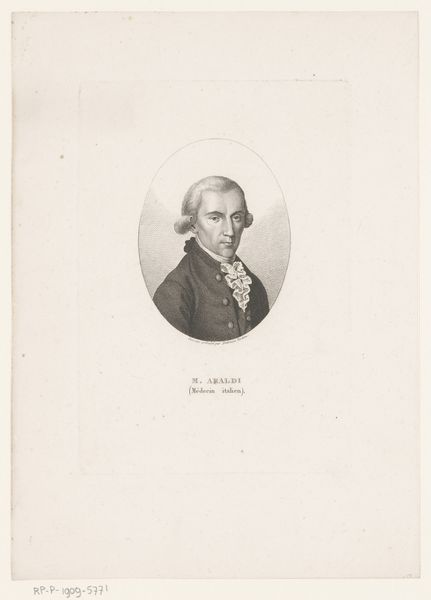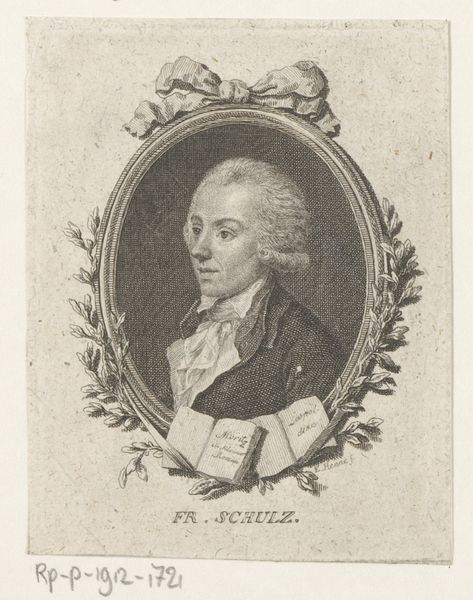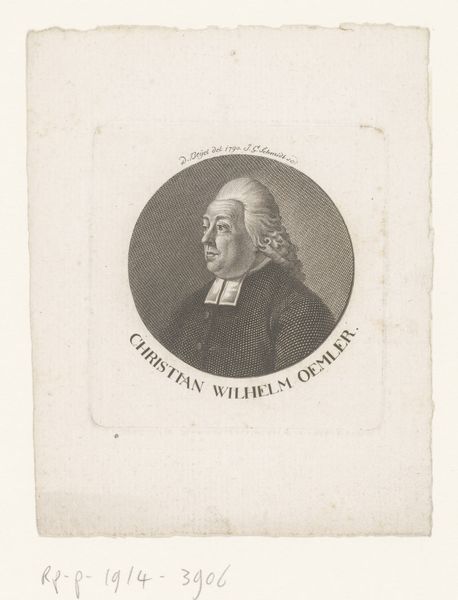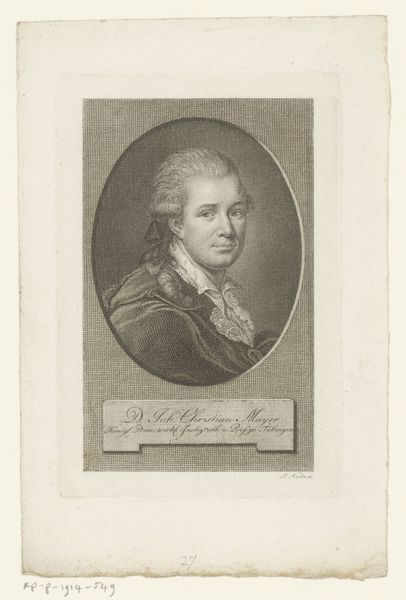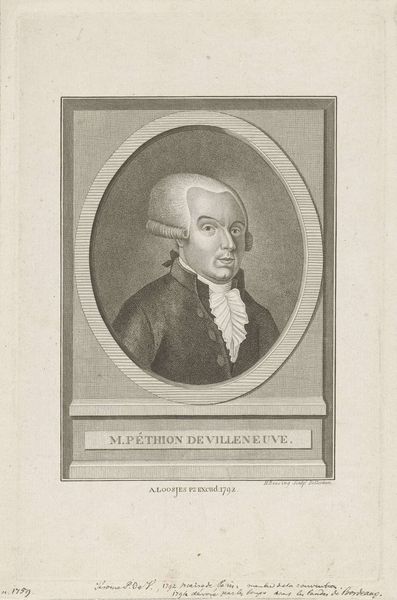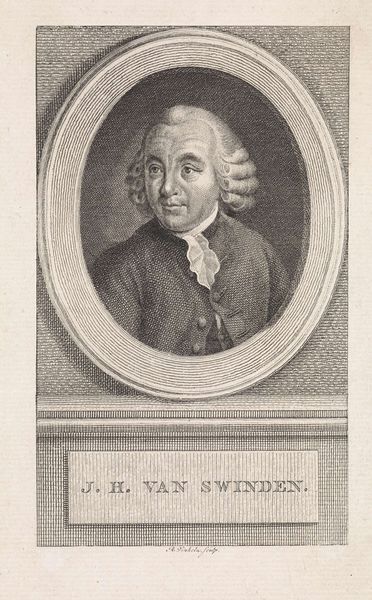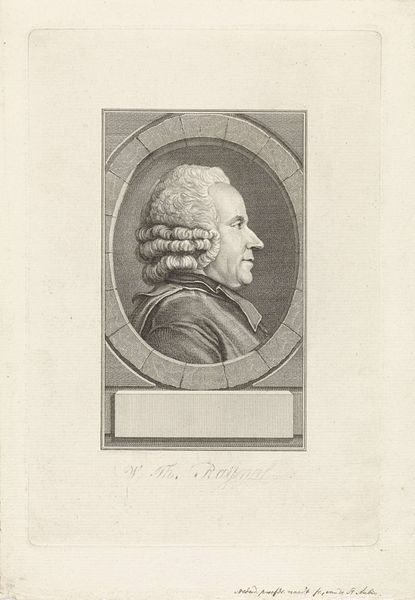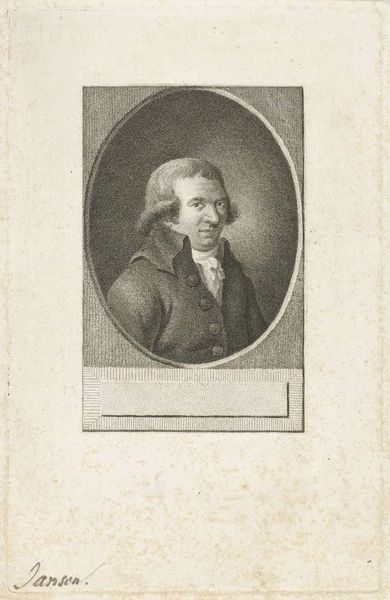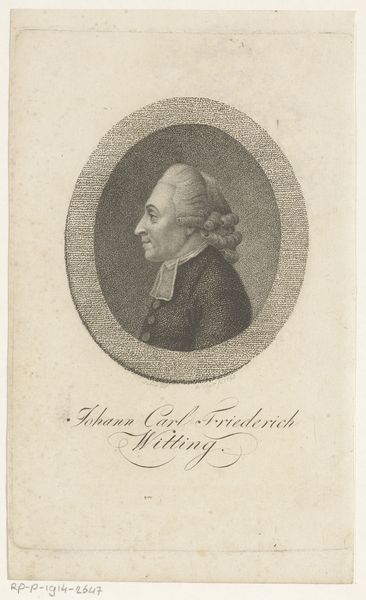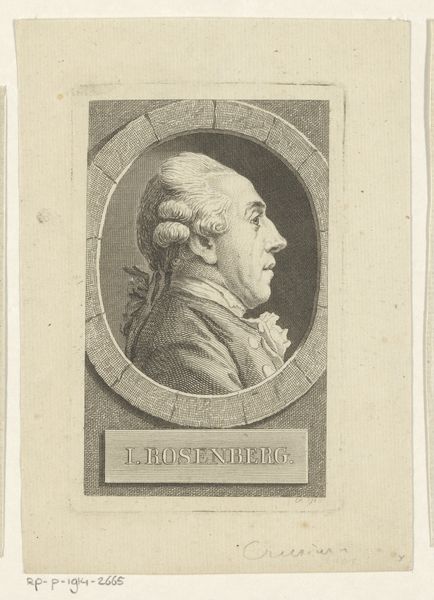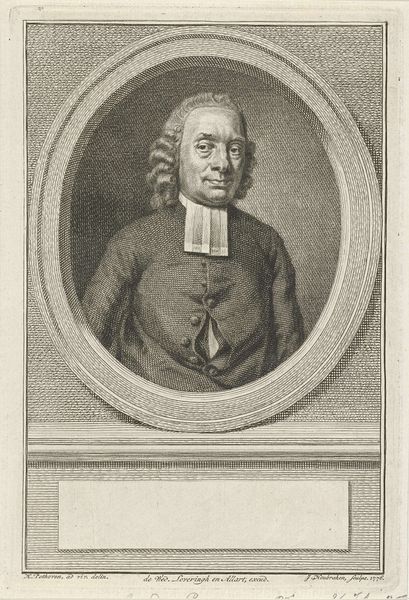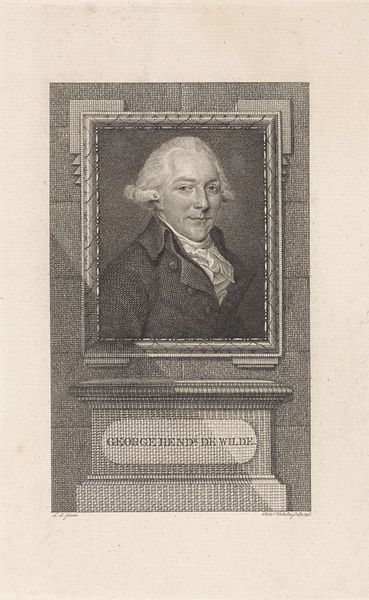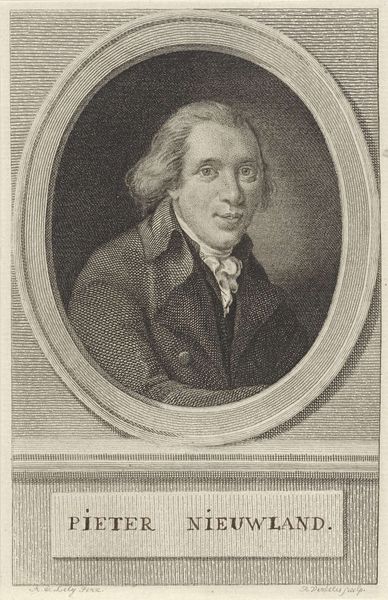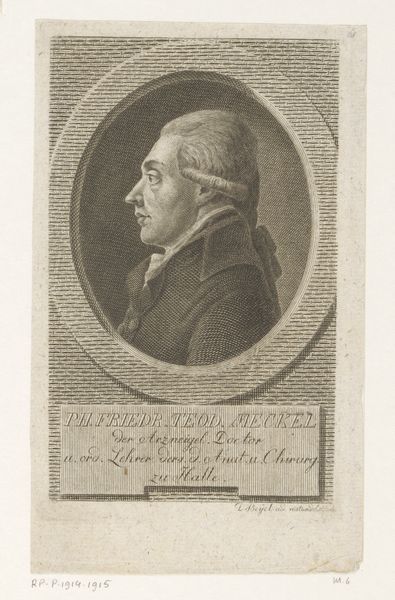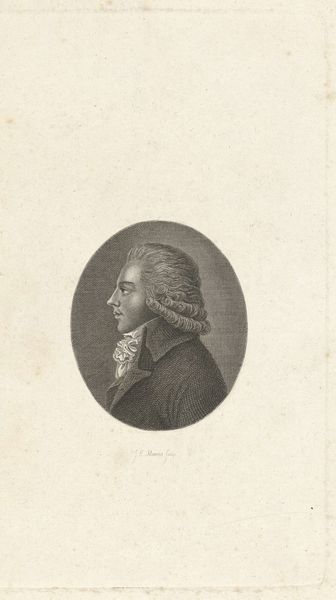
print, etching, engraving
#
portrait
#
pencil drawn
#
neoclacissism
# print
#
etching
#
old engraving style
#
historical photography
#
pencil drawing
#
19th century
#
engraving
Dimensions: height 100 mm, width 82 mm
Copyright: Rijks Museum: Open Domain
Editor: Here we have a print entitled "Portret van Willem Imme" by Anton Karcher, dating back to 1789. It looks like an etching or engraving. It's quite formal, even severe in its presentation, framed within a circular border. What catches your eye in this piece? Curator: The formal structure is indeed paramount. Observe the carefully constructed composition: the portrait in profile, the rigid circular frame adorned with a ribbon at the top. Consider how these elements work together to communicate stability and order, reflecting the values of Neoclassicism. The print medium, etching or engraving, is critical here. The sharp, precise lines create a sense of clarity and control. How do you perceive the treatment of light and shadow in defining the subject's features? Editor: I notice the subtle shading that gives form to his face, especially around the nose and chin. It seems restrained, not overly dramatic. It's more about definition than creating a sense of mood. Curator: Precisely. The limited tonal range emphasizes line and form, furthering the intellectual, rather than emotional, engagement with the subject. The subject's wig and attire, meticulously rendered, signal social status and adherence to convention. This work aims to present Willem Imme as a figure of reason and decorum. Have you considered the placement of the inscription, and its effect on the composition as a whole? Editor: The lettering, with its sans-serif type and symmetrical placement, continues the clean lines and restrained feeling present within the portrait itself. Curator: I agree, this adds to the impact this image can have upon the viewer and our modern sensibilities. Through this analysis of form and technique, we arrive at a deeper understanding of its intended impact. Editor: Thank you, it is fascinating how much can be understood from observing its formal qualities.
Comments
No comments
Be the first to comment and join the conversation on the ultimate creative platform.
